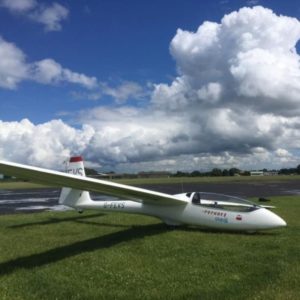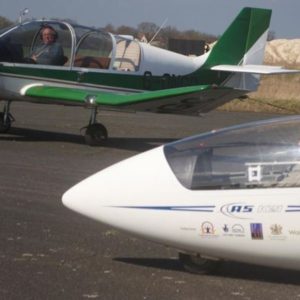No products in the cart.
Glider Training
Showing 1–16 of 22 results
Filters Sort results
Reset Apply
Kick start your aviation dreams & hobby with an intensive personalised flying course from Norfolk Gliding Club. Please enter your preferred dates on the check-out page and a member of the team will be in touch. Book a Gliding Course with us today & fly into 2022! Our courses offer an excellent, exciting & affordable way to give it a go! Last Updated: 09-02-2024 | ||
Fancy learning to fly but not sure where to start? Book a Gliding Course with us today & fly into 2022! Our courses offer an excellent, exciting & affordable way to give it a go! Last Updated: 09-02-2024 |
Glider Training Courses on AvPay
AvPay has a range of Glider Training Courses in the US, Europe, Australia, South Africa and throughout the world. Contact Gliding Training Providers directly on AvPay to compare prices through the Aviation Directories here: https://avpay.aero/directory/. Browse from a wide-range of different Glider Training courses which cover aircraft types such as single seat gliders, dual seat gliders, paragliding and hang gliding.
AvPay is a global aviation marketplace that lets you browse a wide selection of Glider Training Courses. View all of our Flight Training Courses and discover other related Aviation Products & Services here: https://avpay.aero/marketplace/
Can’t find the Glider Training Course you’re looking for? Check-out the Aviation Directories to find an Aviation Company that offers the service you’re looking for: https://avpay.aero/directory/
AvPay: Connecting Gliding Students with Gliding Clubs Worldwide!
At a gliding club, a glider pilot trainee can expect a variety of training activities aimed at developing the necessary skills and knowledge to become a proficient glider pilot. Trainees will receive theoretical instruction on topics such as aerodynamics, glider systems, meteorology, navigation, airspace regulations, emergency procedures, and flight planning. Ground school sessions provide the foundational knowledge required for safe and effective glider operations. Trainees will receive one-on-one flight instruction from experienced glider pilots or certified flight instructors. Dual instruction involves flying with an instructor in the same glider, allowing the trainee to learn practical flying skills, proper techniques, and safety procedures. The instructor provides guidance, feedback, and hands-on demonstrations during the flight. As trainees gain proficiency and demonstrate their competence, they progress to solo flying. Solo flights allow trainees to apply the skills they’ve learned under the supervision and support of the instructor. During solo flights, trainees have the opportunity to practice take-offs, landings, and various flight manoeuvres independently. Some gliding clubs may have flight simulators or computer-based training tools that allow trainees to practice glider operations in a simulated environment. Simulators can be useful for practicing emergency procedures, honing instrument reading skills, and familiarizing oneself with specific glider models. Before each flight, trainees typically receive pre-flight briefings that cover flight objectives, weather conditions, flight plans, and any specific instructions or considerations. After the flight, debriefings are conducted to review the flight performance, discuss areas for improvement, and provide constructive feedback. Many gliding clubs have a structured training program that includes various levels of achievement, often represented by badges or ratings. Trainees can progress through these levels as they gain experience, demonstrate proficiency, and meet specific criteria. These levels may include tasks such as achieving specific altitudes, durations, or completing cross-country flights. Trainees will receive instruction on cross-country flying techniques, including navigation, thermaling (finding and using thermals for altitude gain), ridge soaring, and making field landings. Cross-country training is important for developing the skills needed to fly longer distances and explore different areas. It’s important to note that the specific training program and offerings may vary between gliding clubs. The training activities and progression may be tailored to the trainee’s individual needs, pace of learning, and local flying conditions. The goal is to provide a comprehensive and structured training experience that prepares trainees to become safe, confident, and skilled glider pilots.







